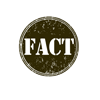The Language of the Web

What's the most common language in use on the Web and which carries the most significant economic opportunity?
Data released from Common Sense Advisory (in its "ROI Lifts the Long Tail of Languages in 2012" report) aims to answer these important questions, revealing very interesting insights into the state of the multi-cultural Web, as well as the potential reach and the Web-based economic opportunity of different languages in the process.
To reach 80 percent of the world's total online population, you need at least 12 languages - Chinese, English, Spanish, Japanese, Portuguese, Arabic, German, Russian, French, Indonesian, Korean and Italian - in that order. In 2009, it only took 37 languages to reach 98 percent of people on the web, but in 2012 it takes 48 languages to reach the same percentage.
To address 90% of global online economic opportunity (spending money) according to CSA, at least 13 languages are needed and it changes somewhat dramatically as compared to reaching the largest segment of the total online population. In order, those languages are English, Japanese, German, Spanish, French, Chinese, Italian, Portuguese, Dutch, Korean, Arabic, Russian and Swedish.
CSA also indicated that the "English" slice of the language pie is getting smaller each year. Since 2009, English is down from 48 to 36 percent while other languages grew from 52 to 64 percent.

Subscribe to Our Newsletter!
Latest in Marketing








